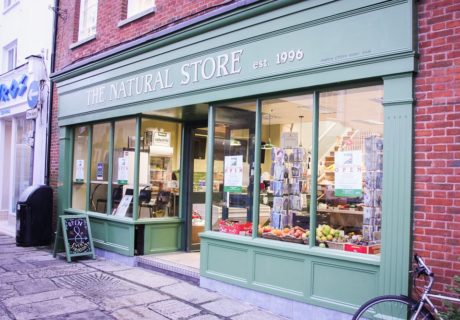We’re only one month into 2017 and it’s already well on its way to making its mark as the year of innovative packaging. And not just in beauty, either, but across the board. According to J Walter Thompson’s Innovation Group Future 100 report, designers are “borrowing forms from other categories and bidding farewell to packaging stereotypes”.
There is a definite blurring of lines that is flipping consumer perceptions and expectations on their head, where food products are dressed up in beauty packaging (The Beauty Chef), or beauty products adopt a clothing aesthetic (Tangent GC).
The Future 100 report cites the examples of Apa Beauty, an oral care brand that launched in early 2016 and crosses into the beauty sector, adopting a clean, minimalist cosmetic design approach; ILA’s kitchen ingredients, which are delivered in sleek black bottles and containers reminiscent of beauty packaging; and the scent of luxury laundry detergent L’Eaundry, inspired by high-end perfume.
Far from product designers deliberately confusing consumers, however, it’s all connected to a strategic rethink by brands as to where their products can sit on the retail shelf. “Food brands can be marketed for beauty; beauty products can adopt the form of cleaning products — it’s about maximizing the retail floor by breaking the packaging norms,” states the report.
To me, this new approach to packaging is a highly savvy way of tackling an age-old problem. If products can offer flexibility to retailers as to where they sit within in-store categories, then the ongoing headache of shelf space can be approached in a more fluid manner. But it also challenges consumers to change their product perceptions, and question a product’s limitations.
The world of functional beauty, where cosmetics offer three-in-one products has slowly become the norm over the past few years, but it looks as though the beauty industry is now entering an even braver new world of wearables and apps. The latest product launches are demonstrating how mobile devices can be used to enhance beauty routines through app technology and by con- necting to wearable devices.
As reported by Cosmetics Business, the latest devices are “evolving in line with changing consumer attitudes and a growing demand for integrated diagnostic approaches to monitor appearance-related concerns and health”.
Jamie Mills, an analyst at Canadean, believes this represents an area of high potential for beauty brands to explore. “According to Canadean’s research, while only 10% of global consumers currently use digital tools to monitor or manage skin conditions, a further 40% say they would be interested in using them in future,” she says.
Capable of tracking, measuring and monitoring appearance and health in real time, the latest beauty wearables are empowering consumers to make better informed decisions on how to improve skin health and informing them as to whether the products and regimes they are following are effective. The sun care and skincare sectors have shown particular interest in monitoring devices for the specific purpose of measuring UV exposure, often in real time, and occasionally alongside measuring the level of vitamin D production.
And just last month, we saw the launch of the very first smart hairbrush from Ke?rastase, which promises to reveal the quality of a user’s brushing technique (consumers will feel a vibration from the product if they are brushing too hard) as well as keep track of how often they comb their locks.
And this is all in the name of helping us to better take care of our radiant skin and luscious locks. If this is what 2017 has delivered in the first month alone, then roll on the rest of the year!
Julia Zaltzmann is a freelance journalist and editor of Natural Beauty News.





